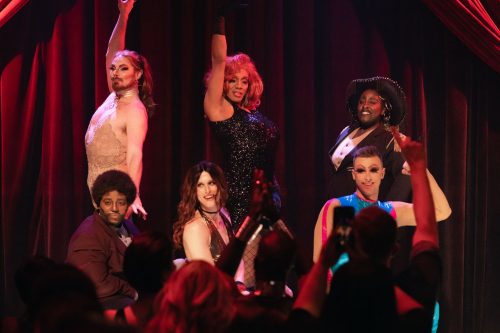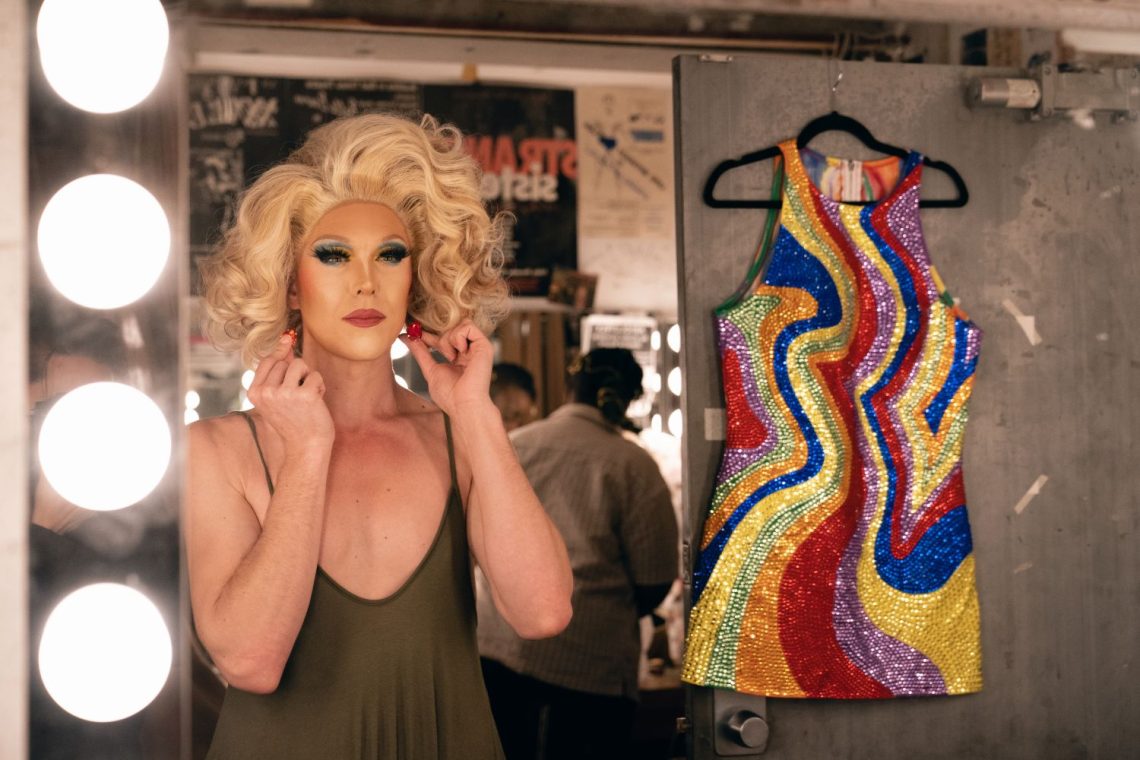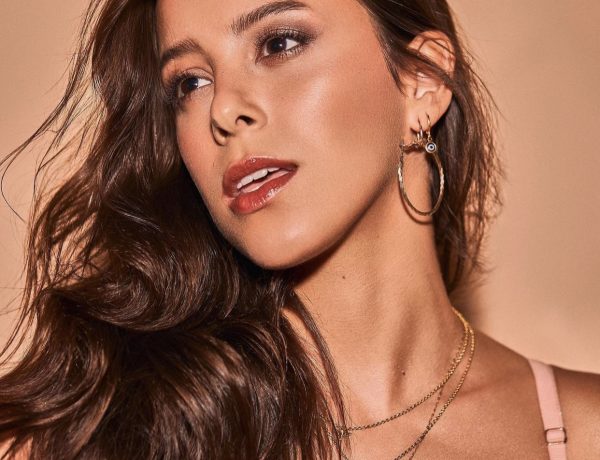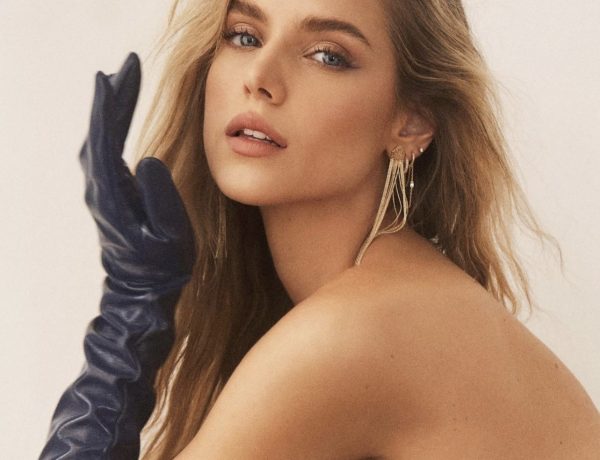Drag goes beyond entertainment. For both performers and audiences, drag is a powerful therapy and glowing declaration of freedom. Tracey Erin Smith has witnessed this phenomenon firsthand. “I have seen the deep healing and medicinal power of bringing forth a character that lives within you,” she says. “You express aspects of yourself that you may not show the world in your everyday life. I’m interested in drag that includes excavating stories and narratives from one’s own life and combining that with the sparkly huge heart and endless possibilities of drag. Those are the two main therapeutic or healing aspects of drag; pulling forward characteristics that, for whatever reason, have been kept hidden. Drag gives us the opportunity to welcome these inner beings, these characters, these Gods, Goddesses and inner Clowns, into the light. These energies and parts that live within you crave the light. That’s why so many of the drag queen costumes are colorful, and the makeup is magical, dramatic and glittering, with buckets of sequins and feather boas. These are parts of us who want to be seen, who want to have the light on them, who want to be loved and give love. When I say that drag is ‘medicine that sparkles,’ the sparkles are the show business aspect of drag, the magic of drag and the creative-wild-acid-trip that is drag. The medicine connects to the saying: ‘A little bit of sugar helps the medicine go down!’ This is true. When I help people create one person shows based on their lives, they often bring forth parts of themselves that explode with boldness, fierceness and power. This is also medicine for the audience, to help heal some of what they’ve been through and the sparkle helps the audience to digest some of the challenging stories that are being shared. Storytelling and drag can take truths that are too hot to handle on their own and put them in a container that delivers them with care and potency into the ears and hearts of the audience. It’s the best of both worlds; combining the magic of drag and the power of personal narrative. That’s a one-two punch inside a glittery velvet glove.”
The pandemic pushed her to take a leap of faith. “When the pandemic hit, I thought, that’s the end of my work! There’s no way people are going to share their deep truths, personal stories, hopes and fears through a computer screen, that will never work! Then, as I found myself sitting at home, craving that level of connection with other people, that level of belonging, I thought, ‘Oh what the hell! If I don’t try it, I’ll never know!’ That’s when I offered my first online workshop through my company SOULO. 55 people signed up, and that was my first clue that people were looking for a real way to connect with other people in a time where everyone was feeling overwhelmingly isolated. These online workshops were not just for drag artists, they were for everyone. In the groups were doctors, lawyers, real estate agents, sex workers, artists, actors, painters, retirees and students, all sharing stories from their lives. Even without the aspect of drag, the phrase and idea of medicine that sparkles was still in operation. So I would say yes, the years during the pandemic and still now, reaffirm this belief. People are much more likely to join something if there is an element of fun, lightness and play to it. Primarily because people want to feel good. You can bring forth so much truth from people, you can midwife such deep healing, when people feel safe enough to let loose, laugh and share the parts of themselves that rarely see the light.” Her own lovingly crafted drag persona gave her license to her to explore previously submerged aspects of herself. “The character of The Burning Bush (the world’s first stripping Rabbi) allowed me to express and explore my sexuality, sensuality, and Jewish spirituality on stage. Growing up, I hid my curvy, female body beneath baggy clothes, extra weight, and bad posture. When I went on stage as The Burning Bush, I wore a skin tight, hot pink polka dot dress with my cleavage pushed up to my chin. This charter is a gigantic heart in a pair of in stilettos. She’s the sexual ultra female side of myself that I truly had been hiding until I gave birth to her. It was amazing! When a performer sets themselves free, from the self-imposed bondage of hiding a part of themselves, and shows it all to an audience, it is so freeing for the performer and it is so liberating for the audience to bear witness and feel that freedom in their cells. Watching someone set themselves free is like experiencing a vicarious salvation. The male drag character that I play is named Buddy. Buddy is a hoser, a Canadian term for a good ol’ boy or a bit of a redneck, but he’s an enlightened Hoser. Buddy also teaches kindergarten at a Montessori school. He’s brilliant with kids and helps them leverage their natural talents and passions to pursue what they want to explore and become in their lives. So, The Burning Bush helped to set my body free and Buddy helped to bring my inner teacher, who absolutely adores teaching, into the world. I love them both. They’ve done an incredible amount for my growth, my enjoyment of myself, and my life.”
She made the very intentional decision to deviate from the traditional competition reality format with her series, Drag Heals. This ensures that contestants will continue to expand their artistry. “Watching fantastic shows like RuPaul’s Drag Race, I am most taken in by the transformation the participants go through and when we get to hear about who they are and the lives that they’ve lived. I knew if I was going to combine drag performance and helping people tell their stories, the format of making it a competition just didn’t make sense. It would go against everything needed to make people feel safe enough to be vulnerable. One of the most magical, unintended consequences of formatting our show Drag Heals not as a competition are the bonds that form between the cast members. When you watch our show, you’ll see that from day one, everyone is truly cheering each other on. In our first episode, I clearly state that this show is not a competition. In fact, our slogan is: ‘No eliminations, only celebrations!’ Once everyone knows that they will not be eliminated before the end of the season, it creates a safety net for people to share more, go deeper, and take more creative risks, because the threat of being told to ‘sashay away’ is nonexistent. If you begin a season with us, you finish the season performing your story and your drag, your way! Another unintended consequence of the format we’ve chosen is the gorgeous mentoring of participants to other participants. Someone who has much more drag experience than someone else will take the newbie under their wing to teach them the ropes of eyebrow blocking or killer lip-synching techniques. There is a generosity that blossoms when people are working together instead of against each other. My life’s work has been about bringing communities together. I really believe the old saying: If you want to travel fast, travel alone, but if you want to travel further, travel together.”
 Tracey’s work involves augmenting lived experiences through a process called theatrical alchemy. “’Theatrical Alchemy’ describes how we take the raw material from our lives and transform it into something more theatrical, more entertaining, sometimes larger than life, while keeping the truth and essence of it in tact. Originally, the term alchemy was used when describing the process of turning base metals into gold. It’s a great metaphor to use when we’re excavating the tears and the joy and the pain from our own lives, and then working with that deep, personal material to transform it into something that has light in it, which pulls the audience towards the person on stage. We want to listen to them. We want to cheer for them as they tell us their trials and triumphs. This process births a more rounded drag performance by making sure we have the fiber and the fluff to serve up a delicious meal of tantalizing truths and diva quality drag.” You must examine yourself in a vulnerable and open way. “Narrative therapy, developed by Michael White and David Epston, has given me a number of creative tools when helping others investigate their stories. One such tool you will see in season three is called the ‘externalization of the problem.’ This approach aims to make sure that individuals are not conflating their identities with the problems they’re facing. The approach asks the client (or in this case, the cast member), to take a problem that they’re facing inside themselves and pull it outside themselves; to externalize an internal irritant. First you identify, and then name the problem, let’s say, in this case, it’s a hyper critical inner voice. Then, to begin the externalization process, you think about, or feel into, what characteristics does this internal problem have when I pull it on the outside myself? In season three, one of the participants externalizes a vicious inner critic that lives within her and turns it into a sock puppet! Which she then has conversations with in front of us on stage. This is one example of how having some of the tools of narrative therapy at my fingertips can help the participants to express their truths in creative and performative ways. The conversation with the sock puppet turned out to be hilarious and super relatable to everyone in the audience. We all have that voice inside us, so the irony is: the more personal you get, the more universal your show becomes.”
Tracey’s work involves augmenting lived experiences through a process called theatrical alchemy. “’Theatrical Alchemy’ describes how we take the raw material from our lives and transform it into something more theatrical, more entertaining, sometimes larger than life, while keeping the truth and essence of it in tact. Originally, the term alchemy was used when describing the process of turning base metals into gold. It’s a great metaphor to use when we’re excavating the tears and the joy and the pain from our own lives, and then working with that deep, personal material to transform it into something that has light in it, which pulls the audience towards the person on stage. We want to listen to them. We want to cheer for them as they tell us their trials and triumphs. This process births a more rounded drag performance by making sure we have the fiber and the fluff to serve up a delicious meal of tantalizing truths and diva quality drag.” You must examine yourself in a vulnerable and open way. “Narrative therapy, developed by Michael White and David Epston, has given me a number of creative tools when helping others investigate their stories. One such tool you will see in season three is called the ‘externalization of the problem.’ This approach aims to make sure that individuals are not conflating their identities with the problems they’re facing. The approach asks the client (or in this case, the cast member), to take a problem that they’re facing inside themselves and pull it outside themselves; to externalize an internal irritant. First you identify, and then name the problem, let’s say, in this case, it’s a hyper critical inner voice. Then, to begin the externalization process, you think about, or feel into, what characteristics does this internal problem have when I pull it on the outside myself? In season three, one of the participants externalizes a vicious inner critic that lives within her and turns it into a sock puppet! Which she then has conversations with in front of us on stage. This is one example of how having some of the tools of narrative therapy at my fingertips can help the participants to express their truths in creative and performative ways. The conversation with the sock puppet turned out to be hilarious and super relatable to everyone in the audience. We all have that voice inside us, so the irony is: the more personal you get, the more universal your show becomes.”
It’s also crucial to reflect on how drag could unintentionally cross boundaries. “In its essence, this relates to the goal of creating a space that is safe for people to share stories and create work. The main importance, and primary purpose, of creating what we call a ‘safe space’ is to foster a place in which people can feel and create at their bravest. Safety helps us take risks. The more risks you take in creating a new show, the more wild things you can find! It’s essential to have conversations about aspects of drag that could be hurtful, so that individuals feel confident to speak up if they feel hurt or uncomfortable. In season two, a good example of this would be a spontaneous conversation that broke out among myself and the cast members. One of the Caucasian performers used a term that it was pointed out to him was one that was originated by, and should be reserved for, people of color to use. This could have been an explosive conversation, but it was handled with care because of the respect and love the group already had for each other. It was a safe place to learn what we didn’t know and move forward together.” Audiences will be in awe of the limitless potential unlocked by emotional catharsis. “When you watch Drag Heals, you will be struck and inspired by what humans can do when they take creative and emotional risks to reveal their true selves and really go for it! Because you’ll also hear many personal stories as you watch the show, it will unlock aspects of yourself, simply by hearing these tales. That is the reward for listening. We learn things about ourselves and life simply by hearing these tales. Other people’s stories really are the secret instruction manual for life. Sharing ourselves connects us deeply to other human beings, and in turn, to the entire human race. When you summon the courage to be vulnerable, the rewards are endless. Showing our cracks in our armor, our foibles, our shortcomings, our worries, ironically, bring us closer to other people. Exposing these tender and fragile parts of ourselves is what makes other people feel that it’s OK to be all of themselves too. From watching season three you will be completely entertained, laugh your butt off, and hopefully decide to do something amazing in your own life. What could be better than that?!” Season three of Drag Heals premieres on February 10th on OUTtv, Amazon Prime and AppleTV+.
Read more Celebrity Interviews on ClicheMag.com
“Two Brothers” Examines Racism and Homophobia in Rural Canada. Photo Credit: Courtesy of Project Four PR.





